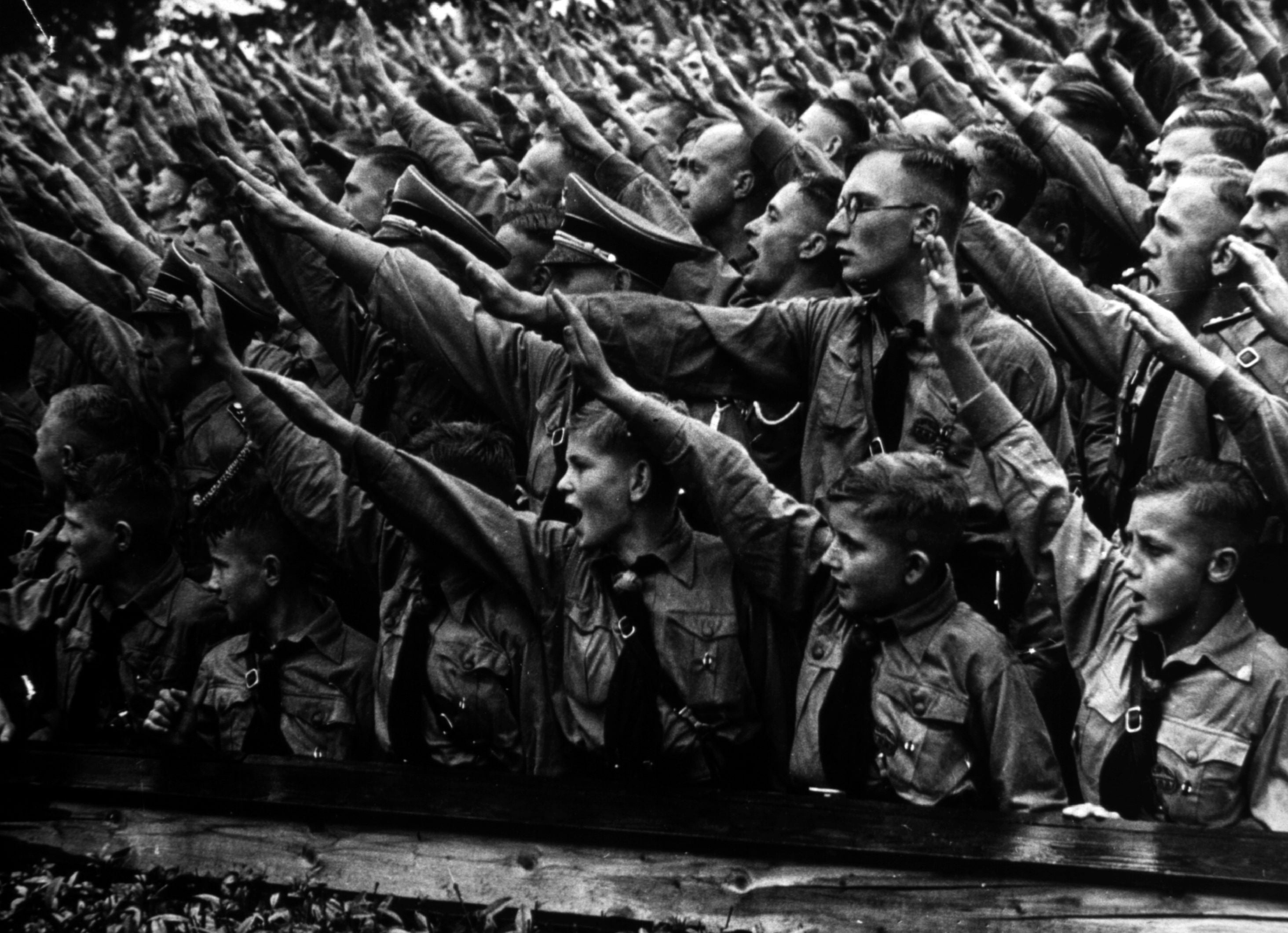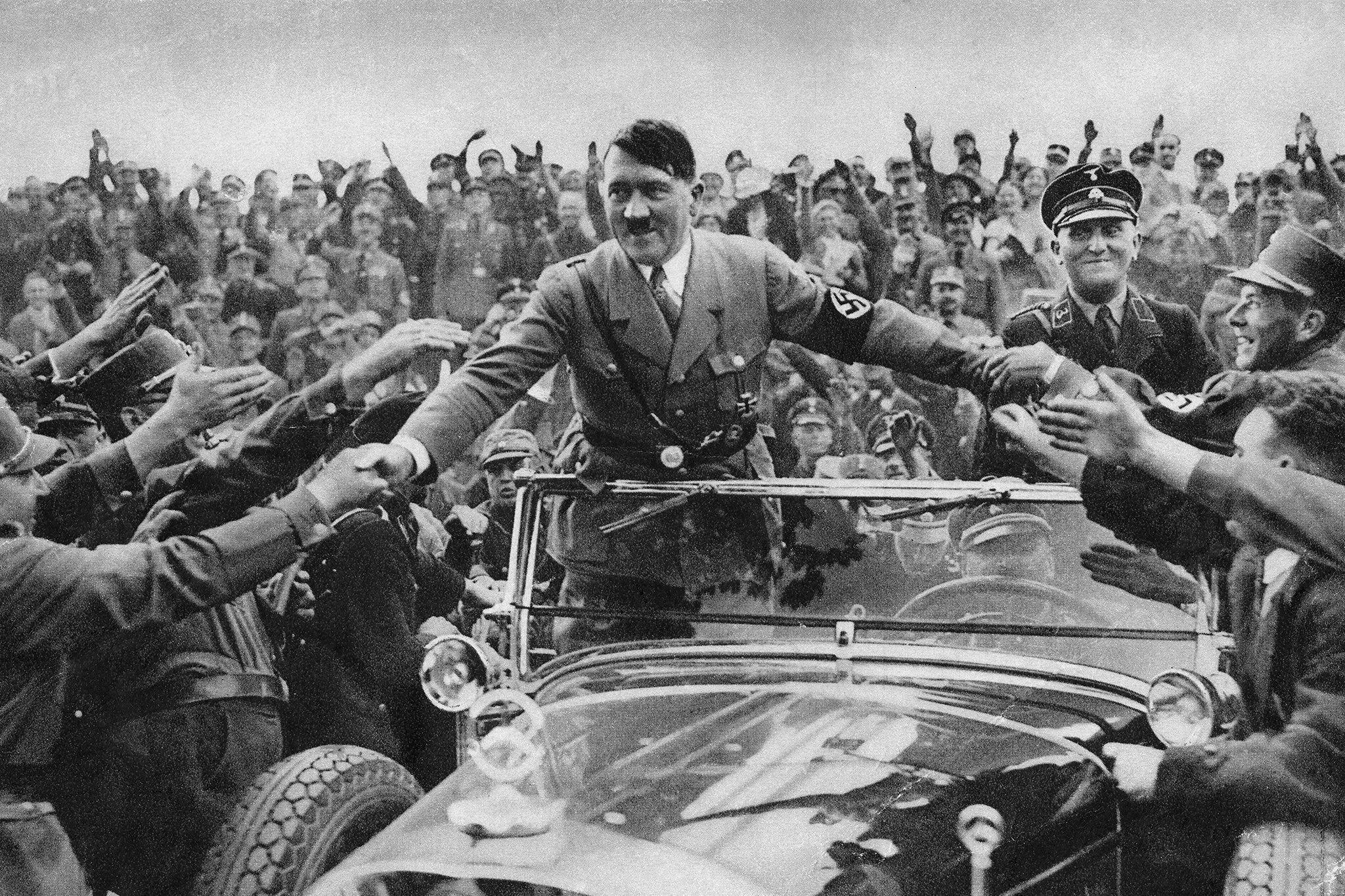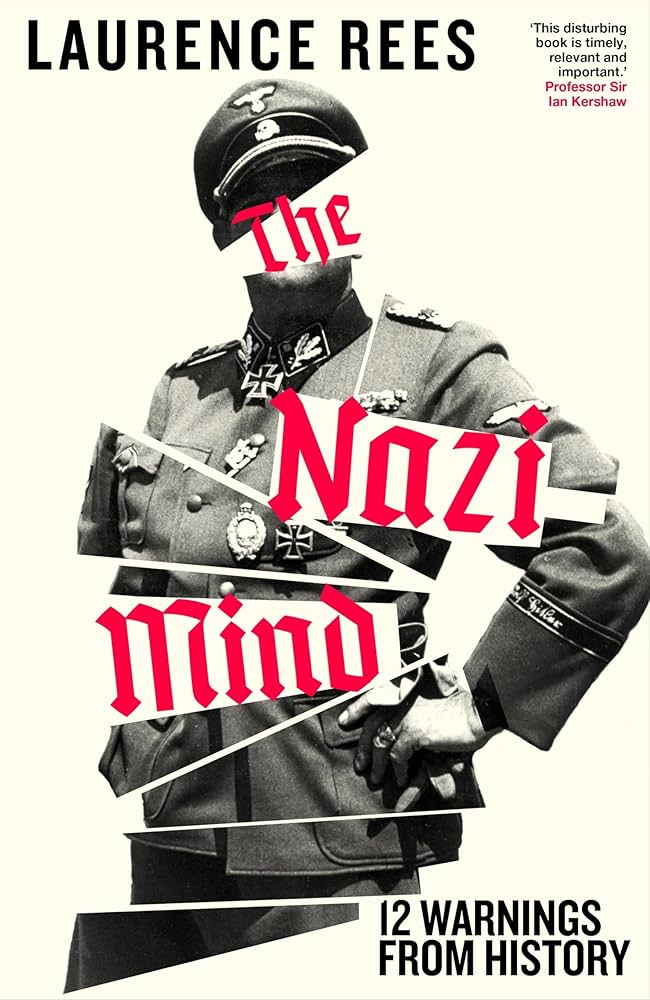The Independent's journalism is supported by our readers. When you purchase through links on our site, we may earn commission.
The nine warnings from history about the rise of the Nazis that already strike a chord
In his new book, acclaimed historian of the Nazis Laurence Rees takes a forensic look at how the authoritarian regime rose to power and the ordinary citizens who let it happen. Nine of the 12 warnings have a contemporary relevance, says Robert McCrum, and in the age of Trump 2.0, it is compulsive reading


The British fascination with the tyrannies of sinister, evil, and possibly mad foreign dictators is a tale we love to tell. It goes with our history as the “sceptr’d isle” beset by enemies. In a society that’s been periodically obsessed by the threat of European invasion, that nightmare is remembered in phrases such as “Boney will get you” and “take back control”.
During the reign of Elizabeth II, our not-so-secret pride in the way we opposed the horrors of 20th-century totalitarianism became a scarlet thread in the tapestry of our national story. Churchill, who “gave the roar” to Britain’s response to the Nazis, was a well-judged organ grinder as much as a rhetorical master.
There are many ironies in our dread of Nazism. We purport to be unscathed by hostile invasions and alien ideology. Yet the conquest of 1066 was followed by 300 years of French occupation, the “Norman yoke”.
And we have known other oppressions. In what sense, then, are we immune to authoritarian governance? Besides, when the walls between subjugation and freedom can be so paper-thin, is it not prudent to keep an eye on any predisposition to tyrannical government?
Laurence Rees, a lifelong and acclaimed historian of the Nazis, does not invoke this context as a British intellectual. He does not need to. The making of “the Nazi mind” from 1919 to 1945 is both enthralling and chilling on its own terms. As a “warning from history” in the age of Trump 2.0, it’s compulsive reading.
Of course, The Nazi Mind must address the charismatic evils of monsters such as Hitler and Goebbels. Each occupies their own special place in any 20th-century Inferno, the Fuhrer as a petit-bourgeois carpet-chewing Beelzebub; his brilliant propagandist as a silky, satanic antisemite. They, in turn, are flanked by several junior fiends: Himmler, Frank, Goring, Heydrich, Mengele, Rosenberg, Eichmann, and others.
But those sadistic deputies are not the whole story. Their sinister cruelties depended on countless humdrum enablers in the SS and the Gestapo, the foot soldiers of the Third Reich. More alarming still is the tale that Rees unfolds about the motivations and manipulations of everyday life in Germany after the collapse of the Weimar Republic that underpinned the evils of Hitler’s regime.
How, asks Rees, could the Nazis have committed the crimes they did? Why did the death camp commandants thrill to their programme of mass murder? Most disturbing of all: why did so many ordinary Germans become complicit in the elimination of the Jews? (Notoriously, even the philosopher Martin Heidegger was a Nazi.) How was it possible that people from such a cultured nation perpetrated the worst atrocities in history? Finally, the big one: what relevance does this history have for us today?

Rarely have the tormented questions that accumulate around the conduct of the Third Reich been subjected to such a baleful, brilliant, modern and revelatory interrogation, combined with some acute neuro-psychological interpretations.
The use of medical science is telling. As populist Donald Trump takes up his second term as US president and Elon Musk is seen doing what many consider to be a Nazi salute in full sight, these are issues Rees is at pains to present with all the clarity and insight of the forensic historian.
The Nazi Mind is not the first examination of this subject, but it’s unquestionably the best informed. As early as August 1941, for example, the renowned American journalist of the Roosevelt years, Dorothy Thompson, wrote her essay “Who Goes Nazi?” in Harpers, grappling with issues that trouble Rees, but she does it almost tongue in cheek; “an interesting and somewhat macabre parlour game to play at a large gathering of one’s acquaintances: to speculate who in a showdown would go Nazi”.
Thompson is forthright, American and (in 1941) untroubled by the Holocaust. “I know lots of Jews,” she writes, “who are born Nazis and many others who would heil Hitler tomorrow morning if given a chance. There are Jews who have repudiated their own ancestors in order to become ‘Honorary Aryans and Nazis’; there are full-blooded Jews who have enthusiastically entered Hitler’s secret service. Nazism has nothing to do with race and nationality. It appeals to a certain type of mind.”

She goes on: “It is also the disease of a generation – the generation which was either young or unborn at the end of the last war. This is as true of Englishmen, Frenchmen, and Americans as of Germans, the disease of the so-called ‘lost generation’.”
Here, Thompson’s analysis morphs with Rees’s “12 warnings”. The evolution of Hitler’s grip on the German people begins, says Rees, with three specific corruptions of democracy in the aftermath of the First World War: first, the spreading of conspiracy theories (about the role of the Jews in Germany’s 1918 defeat); second, the promotion of a rhetorical “Them vs Us” narrative; and third, Hitler’s self-invention as a heroic leader who would become a quasi-parental figure within the German psyche.
This triad of manipulations depended on their success in targeting the younger generation. The biology of the brain’s amygdala not being fully developed before the age of 25 means that, as Rees puts it, “adolescents are the easiest people to mould into fanatics”.

From the process of corrupting young people to finally seizing supreme power by conniving with the German elite, principally Hindenburg, Rees explains how Hitler ran his absolute dictatorship on surprisingly conventional lines. As Fuhrer, he eliminated human rights, terrorised the free press, diverted his voters (the Berlin Olympics became Goebbels’s bread and circuses), and promoted a utopian fantasy about a new Holy Roman empire (shades of Maga here).
To his great credit, Rees never mentions Trump. You will look in vain for the return of the 45th US president, or indeed any reference to Orban, Putin, or Kim Jong Un. That’s not necessary, of course. Nine of Rees’s “12 warnings” will already strike a chord in the agitated thoughts of the contemporary reader.
The climax – so to speak – of The Nazi Mind is its portrait of Hitler’s regime in its mature, and most unhinged phase, after the Night of the Long Knives. Paradoxically, for all the international condemnation, it was this event that cemented Germany’s approval of the Fuhrer.
Henceforth, the Nazis would concentrate on four governing strategies that must put it, for all time, beyond the pale of civilised consideration: the brutal elimination of resistance; the escalation of murderous racism; the deployment of “killing at a distance” (gas chambers, blitz bombing); and, above all, terror – the fuelling of an acute, and universal, dread.
In the end, it’s not so much a warning as a conundrum from history. Rees lists his 12 warnings, each one more minatory than the last. Then, he says, something happened: “The Nazis were defeated.”
‘The Nazi Mind: 12 Warnings from History’ by Laurence Rees (Viking Penguin, £25)


Join our commenting forum
Join thought-provoking conversations, follow other Independent readers and see their replies
Comments